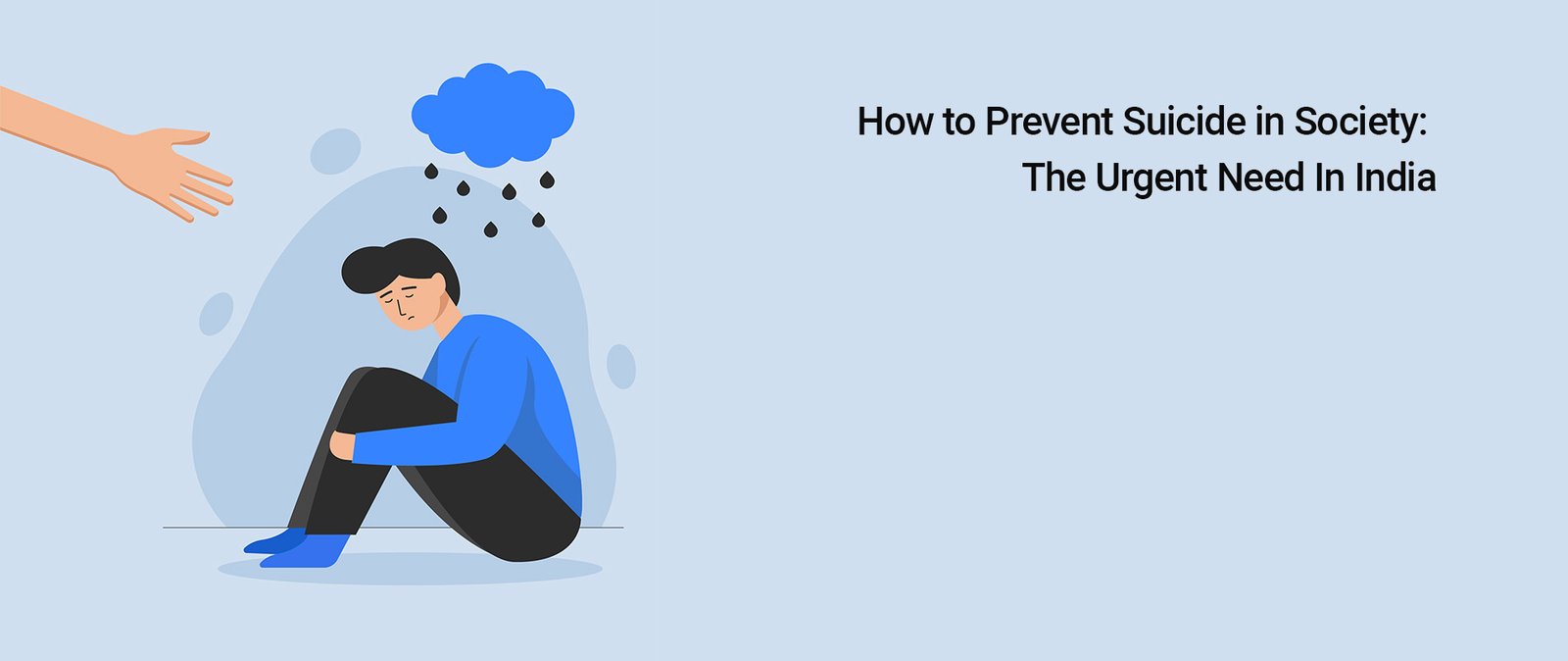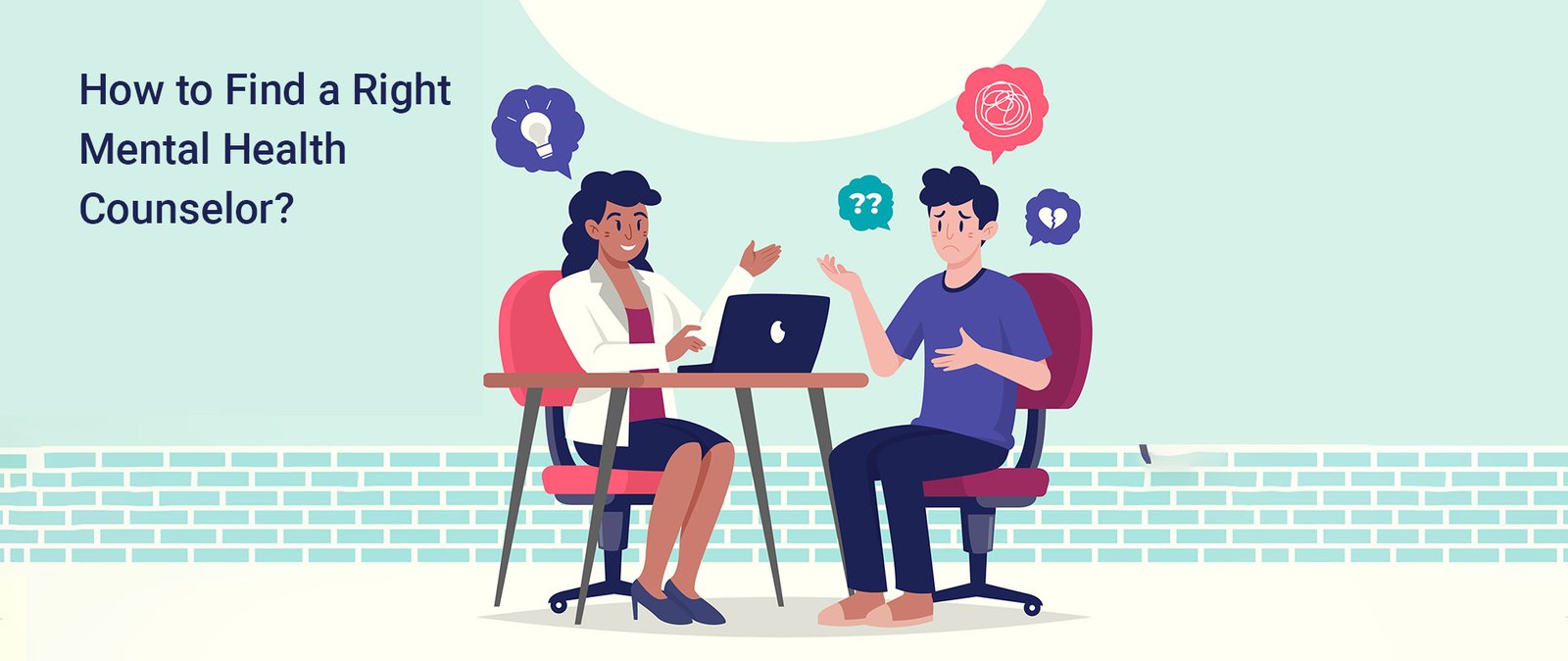Table of Contents
Suicide Prevention
Suicide is a major public health concern. In 2020, suicide was the 12th leading cause of death overall in the United States. Suicide is complicated and dreadful, but it is often preventable by knowing the warning signs for suicide. Suicide prevention starts with recognizing the warning signs and taking them seriously. If you think any of your friends or family member is suicidal, there’s plenty you can do to help save a life.
What Is Suicide In Society?
Suicide is when people hurt or harm themselves with the fixed goal of ending their lives, and they die as a result of the action. A suicide attempt is when people harm themselves intending to end their life, but they do not die as a result of their actions. Suicide and suicide attempts affect the health and well-being of self, family, friends, loved ones, co-workers, and the whole community.
When people die by suicide, their surviving family and friends may experience shock, anger, guilt, symptoms of depression or anxiety, and may even experience thoughts of suicide themselves. It can cause serious emotional, physical, and economic impacts on others’ mental and physical health as well. People who attempt suicide and survive may experience serious injuries that can have long-term effects on their health. They may also experience depression and other mental health concerns.
Steps to Help Prevent Suicide
If someone indicates they are considering suicide as an option, the first thing to do is – DO NOT IGNORE. Listen and take their concerns seriously. Don’t be afraid to ask questions. Let them know that you care for them and that they are not alone. Encourage them to seek help immediately from a knowledgeable professional. Never leave them alone.
The five action steps for communicating with someone who may be suicidal are proven beneficial by evidence in the field of suicide prevention.
Here are the 5 steps you can take to prevent suicide –
1. Ask Them
If the person is showing a few warning signs by which s/he is indicating that s/he is suicidal. Ask them – “Are you thinking about killing yourself?” Studies show that asking at-risk individuals if they are suicidal does not increase suicides or suicidal thoughts. It takes a lot of courage to ask someone this question even though it seems easy superficially. Asking this question directly and in an unbiased manner, can open the gate for an effective conversation about their emotional pain. Other questions you can ask include, “Why do you think so?” and “How can I help?” Remember, do not ever promise to keep their thoughts of suicide a secret. The other side of the “Ask” step is to “Listen.” Make sure you take their answers seriously and do not ignore them. Ask them their reasons to live and die. Help them focus on their reasons for living and avoid imposing your reasons for them to stay alive.
2. Be There For Them
Listen to the person non-judgementally and carefully and acknowledge their feelings. Research suggests acknowledging and talking about suicide may reduce one’s suicidal thoughts. This could mean being physically present for someone, speaking with them on the phone whenever you can, or any other way that shows support for the person at risk. Listening nonjudgmentally is very important during this step – finding out what and who they believe apart from you will be the most effective source of help.
3. Keep Them Safe
After the “Ask” step, and you’ve determined suicide is indeed being talked about by the person, it’s important to find out a few things to establish immediate safety. It’s important to ensure that – Have they already done anything to try to kill themselves before talking with you?, Do they have a plan for killing themselves? , What access do they have to the plan? etc. Knowing the answers to each of these questions can tell us a lot about the imminence and severity of danger the person is in. Reducing a suicidal person’s access to highly lethal means or any chosen method for a suicide attempt is an important part of suicide prevention.
4. Help Them Connect
Helping someone with thoughts of suicide connect with ongoing support can help them establish safety for those moments when they find themselves in a crisis. Ask them if they are seeing any mental health professionals currently or in the past. If not, ask them to connect to the suicide helpline number or mental health professional in time. Encourage them to seek help if they are not willing.
5. Follow Up
After your initial contact with a person experiencing suicidal thoughts, and after you’ve connected them with the immediate support systems they need, make sure to follow up with them to see how they’re doing. Leave a message, send a text, give them a call, or if possible, meet them personally. This type of contact can continue to increase their feelings of connectedness and share your ongoing support. They might feel that “someone is here for them”. Studies have proven that there is a reduction in the number of deaths by suicide when follow-up was takenwith high-risk people. Studies have also shown that supportive and constant contact can be an important part of suicide prevention.
By following these 5 steps, the prevention of suicide is possible.
Common Misconceptions About Suicide
Suicide has occurred in almost every culture and period. There are many myths about suicide that have evolved. Let us clarify a few myths about suicide with the help of knowing the facts about it
1) MYTH: People commit suicide “Out of the blue”
FACT: Most of the time, the warning signs are communicated beforehand which can often be ignored by others. The person having suicidal thoughts is thinking about it for a long. But, does not take the action. Many times, underlying mental health condition is also there which makes the person take this step. This underlying mental health condition is often ignored by the person and by others in contact with him/her.
2) MYTH: Only depressed people commit suicide.
FACT: There are many other mental health conditions apart from depression that contributes negatively to taking this step. Such other mental health conditions may include personality disorders such as borderline personality disorder, Anxiety disorders, Obsessive Compulsive disorders, Post-traumatic Stress disorders, etc.
3) MYTH: When a person commits suicide, his or her situation was probably so bad that death was the best option.
FACT: Death is never the best option. Even if life events are not so favorable, there always is a way out. Everyone’s style of coping with negative life events is different and thus, people may think that suicide is the best option. But, the answer is NO! There are other ways to cope with life’s unfavorable circumstances. You just have to find a way to cope with it effectively.
4) MYTH: People who talk or threaten suicide, never do it.
FACT: Almost everyone who attempts suicide has given some clue or warning in the past. Never ignore any indirect references to death or suicide. Statements like “You’ll be sorry when I’m gone,” and “I can’t see any way out,”—no matter how casually or jokingly said—may indicate serious suicidal feelings. Take all threats seriously.
5) MYTH: People who want to commit suicide, will find a way out. You can’t stop them.
FACT: Most people having thoughts about suicide are unsure whether they want to do it or not. They are confused between the desire to live and die. If you talk to them openly, they might change their mind as well. Try keeping them away from harmful things such as poison, sleeping pills, etc.
6) MYTH: Suicides are common in lower socio-economic classes.
FACT: Suicide has nothing to do with one’s socio-economic class. The thought can come into any person’s mind. Even rich people can commit suicide.
7) MYTH: One should not speak about suicide openly.
FACT: Talking about suicide openly is always the best idea. It can open gates to multiple discussions. You can save a person from committing suicide by talking with him/her openly.
8) MYTH: Suicide can’t be prevented.
FACT: Suicide indeed is preventable but unpredictable. Most people who contemplate suicide, often experience extreme emotional pain, and hopelessness and have a negative view of life or their futures. Suicide is a product of genes, mental health illnesses, and environmental risk factors. If one pays attention to the early warning signs, suicide can be prevented.
9) MYTH: People who commit suicide are selfish, cowards, or weak.
FACT: People do not commit suicide by choice. Often, people who die of suicide find it difficult to consider different views or see a way out of their situation and experience intense emotional pain. Even though the reasons behind suicide are quite complex, frequently suicide is associated with psychiatric illnesses, such as depression, anxiety, bipolar disorder, schizophrenia, and substance use.
10) MYTH: Therapy doesn’t work for suicide.
FACT: Treatment can and does work. One of the best ways to prevent suicide is by getting therapy for mental health conditions, such as depression, bipolar illness, or substance abuse, and learning ways to cope with problems more effectively. Finding the best treatment can take some time, and the right treatment can greatly reduce the risk of suicide.
Warning Signs of Suicide
People thinking about suicide always give some or the other warning signs beforehand. One should notice them prevent suicide. The behaviors listed below are some of the warning signs that someone is thinking about suicide.
Talking about
- Wish to die
- Being a burden to others
- One’s absence (E.G. – How will you feel if I am not here in the next few days?”
- Abruptly mentioning one’s death
- Great guilt or shame about something
Feeling:
- Empty
- Irritated
- Helpless, Hopeless
- Trapped, or having no reason to live
- Extremely sad
- More anxious, agitated, or full of rage
- Unbearable emotional or physical pain
- Uneasy
Changing behavior such as –
- Making a plan about one’s death
- Researching ways to die
- Withdrawing from friends, saying goodbye
- Giving away important possessions
- Making a will
- Taking dangerous risks such as driving extremely fast, Doing adventurous sports without appropriate safety measures
- Displaying extreme mood swings
- Sudden changes in sleep, weight, appetite
- Using drugs or alcohol more often
Risk factors for suicide
Several factors increase the risk of suicide:
- Family history of suicide
- Alcohol or another drug misuse
- Previous suicide attempt(s)
- Isolation
- Mental illness
- Loss (relationship, social, work, or financial)
- Physical illness and chronic pain
- Hopelessness, impulsiveness, aggressiveness
- Local epidemics of suicide
- Barriers to accessing mental health treatment
- Easy access to lethal methods
- Unwillingness to seek help due to stigma
What Can the Government Do to Reduce Suicide Rates?
Governments play a vital role in the fight of preventing suicides. The first step in this battle is to create a national strategy, stating a clear commitment to suicide prevention. Currently, only 28 countries have such a strategy. Government can restrict access to the most common means of suicide. In India and Sri Lanka, restricting access to pesticides locally through locked storage facilities has been effective in lowering suicide rates. Evidence from Australia, Canada, New Zealand, the United States, and several European countries suggests that restricting access to firearms has been associated with a drop in firearm suicide rates.
Apart from this, responsible media reporting has been shown to decrease suicide rates. This involves educating people about suicide, risk factors, and where to seek help. Governments can help the media with these efforts by releasing public service announcements that raise awareness, identifying and treating mental and substance use disorders as early as possible, and ensuring those vulnerable to suicide receive the care they need before it is too late. Such government advertisements can be run through television to spread awareness of suicide prevention.
Several countries have established national suicide prevention plans or strategies. Their principles and action steps represent good sources for developing specific policy recommendations to present to governmental and legislative leaders. Common elements of these plans and strategies include:
- Campaigns to increase public awareness of suicide as a preventable problem
- To reduce stigma related to seeking mental health professional’s help
- Community development to support the creation and implementation of suicide prevention programs
- Improved access to services for suicidal people and their loved ones, and improved service delivery efforts through the development of guidelines and linkages
- Media education to improve reporting and portrayals of suicide in the media
- Training for caregivers to improve recognition of at-risk behavior and delivery of effective treatments
- Incorporation of licensing standards for professional caregivers
- Development and promotion of effective clinical and professional practices
- Means restriction initiatives to reduce access to lethal means and methods of self-harm
- Research and evaluation to promote and support research, improve surveillance systems, and evaluate the effectiveness of new or existing suicide prevention interventions
How Can We Stop Suicide In India?
Suicide prevention and intervention efforts in India are currently in the growing stage. According to the World Health Organization (WHO), suicide in India is a serious public health issue but it can be prevented with timely interventions that are based on evidence. Suicide prevention is also one of the United Nations Sustainable Development Goals wherein they have asked member countries to work towards reducing global suicide rates by one-third by the year 2030. A few notable steps taken by the Government of India include the decriminalization of suicide in the Mental HealthCare Act of 2017 and the launching of India’s first mental health toll-free helpline KIRAN (1800-599-0019). Psychiatrist Dr. Satyakant Trivedi from Bhopal, Madhya Pradesh had launched a social media campaign demanding a national policy on suicide prevention. However, India is yet to formulate its national strategy.
Here are a few initiatives by the government of India to prevent suicides –
1) Decriminalization of suicide act – The Mental Health Care Act 2017 negated laws of Section 109 of the Indian Penal Code and stated that attempting suicide is not a crime. The person who is committing suicide is believed to be under a lot of stress and does not warrant punishment. Furthermore, the act announces provisions such as access to free healthcare and rehabilitation for people who attempt suicide.
2) KIRAN helpline – KIRAN is a toll-free 24*7 mental health helpline launched in September 2020 to help individuals who need mental health support. Here, calls can be made in 13 local languages.
3) Suicide prevention policy – The government of Madhya Pradesh has started working to formulate India’s first suicide prevention policy.
4) Community programs – Centre for Mental Health Law and Policy (CMHLP) works to implement evidence-backed suicide prevention interventions in rural India through their Suicide Prevention and Implementation Research Initiative (SPIRIT). Interventions include training youth and making them aware of mental health, safely storing pesticides, and training community people to identify and support at-risk individuals. In collaboration with Sangath, Quicksand Design Studio, and the Centre for Mental Health Law and Policy (CMHLP) are leading a program called iOutlive! where suicides among young people in Urban India belonging to marginalized and deprived identities will be addressed. Interventions include resource sharing, campaigns, and chat-based peer support service
5) Gatekeeper training – Suicide Prevention India Foundation (SPIF) has collaborated with the QPR institute to offer gatekeeping training in India. This training aims to equip members of the public with basic knowledge about the signs of suicide and first aid skills so that they can identify and support a person undergoing a suicide crisis. SPIF is also working to create a community of gatekeepers in India so that help is more accessible to those who need it.
6) National Alliance for suicide prevention – Mariwala Health Initiative has announced a National Alliance to bring together individuals from multiple sectors including research and policy to work towards a common goal of suicide prevention. They aim to support community-based interventions and prioritize the lived experiences of individuals. They’ve also published a report titled ‘Suicide Prevention: Changing the Narrative’ where the Indian scenario is summarised.
7) Centralized pesticide storage facility – Vijayakumar and colleagues (supported by the Sneha Suicide Prevention Centre in India and WHO) constructed two centralized storage facilities in two villages in Tamil Nadu to reduce pesticide-related suicides. Farmers could store their pesticides in storage boxes (similar to a bank locker) and they could access their pesticide-storage boxes with the key to their locker. There was a significant reduction in pesticide suicides in the villages where this facility was constructed compared to other villages in Tamil Nadu. Few state governments in India like Madhya Pradesh have started thinking about the concept of pesticide banks.
The Government is taking immense efforts to reduce the number of suicides in India. Prevention is possible while taking such steps.
The Bottom-Line
Suicides are preventable. Much can be done to prevent suicide at the individual, community, and national levels. One thing to remember is that do not to ignore early warning signs.
If you are someone who is suffering from suicidal thoughts or have attempted suicide in the past or if you know anyone who might need help, we are here to help you. We, at WAITT, provide the best counseling services for suicide. Our helpline also works on 2 principles – giving people a safe space to talk without feeling shy or embarrassed and providing empathetic and non-judgemental listening. Our helpline Sakal Sobat Boluya is a mental health helpline that works 24*7 days for suicide prevention. Suicide is one of the major areas for which the helpline works. It is a free helpline, which you can reach at any time of the day and the counselor will guide you in your crisis. The hotline number is 020 71171669. The hotline is designed for you. So, you can reach out to us anytime when you need help because we are here for you!









